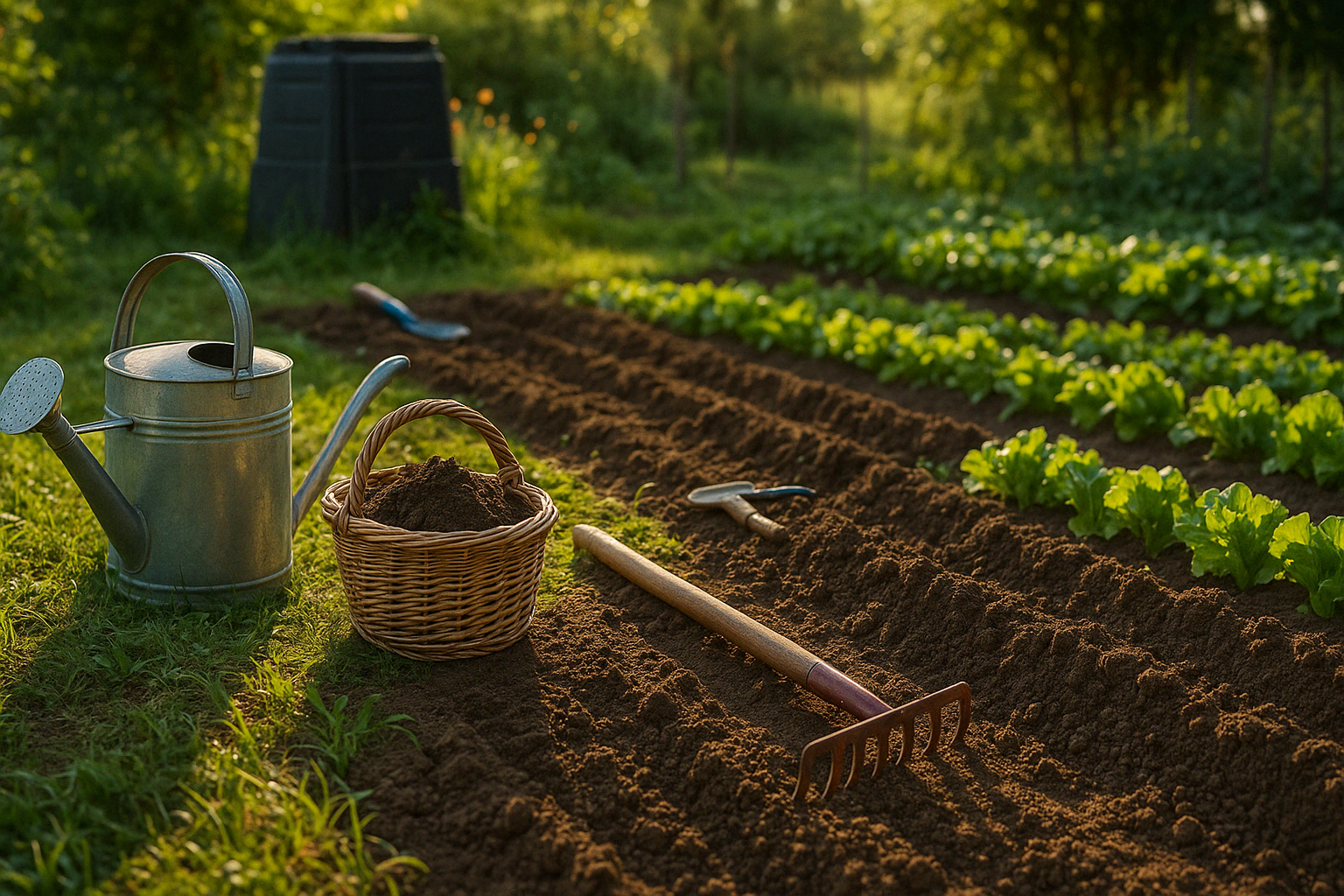
Hey garden dreamers! 🌱 Spring 2025 is officially here, and there’s never been a better time to get your hands dirty and grow your own food.
Whether you’re planning to plant crunchy carrots, leafy kale, or juicy heirloom tomatoes, one thing’s for sure: a successful harvest starts with proper preparation. This isn't just about digging some dirt—it’s about understanding your environment, your soil, your plants, and even the microorganisms that make your garden thrive.
Here’s your ultimate, science-based guide to preparing your vegetable garden for maximum growth, flavor, and sustainability.

🪴 1. Pick the Perfect Spot
Choosing the right location is more than just picking a sunny patch. Plants rely on photosynthesis to grow, and most vegetables require at least 6–8 hours of direct sunlight per day to fuel that process efficiently. A lack of sunlight can lead to leggy plants, poor fruiting, and susceptibility to disease.
Also, look for:
-
Good air circulation, but not too much wind (which can damage delicate stems or dry out soil).
-
Proximity to water, making it easier to maintain consistent moisture levels.
-
Well-drained ground, as standing water promotes root rot and fungal diseases.
🧭 Pro Tip: A south-facing garden (in the Northern Hemisphere) maximizes sun exposure throughout the day. Use a sun-tracking app to check light levels in your yard before digging.
🌱 2. Test and Boost Your Soil
The foundation of a healthy garden lies beneath your feet. Soil isn’t just dirt—it’s a living ecosystem full of bacteria, fungi, minerals, and organic matter that all interact to support plant life.
Start with a soil test (available at most garden centers or online). It tells you:
-
pH level (ideal for most vegetables: 6.0–7.0)
-
Nutrient levels like nitrogen (N), phosphorus (P), and potassium (K)
-
Organic matter content
If your soil is lacking, improve it with:
-
Compost: Adds organic matter and beneficial microbes
-
Aged manure: Boosts nitrogen levels naturally
-
Mulch or leaf mold: Improves moisture retention and suppresses weeds
🧪 Science Tip: A thriving soil microbiome boosts nutrient availability, plant immunity, and root development. Think of it as “gut health” for your garden.
🪓 3. Plan Smart, Plant Smart
Throwing seeds around randomly is a rookie mistake. Smart garden planning ensures space, sunlight, and nutrients are used efficiently—and that plants support rather than compete with each other.
Here's what to do:
-
Draw a garden map or use digital tools like "GrowVeg" or "Planter".
-
Group plants by sunlight and water needs.
-
Use companion planting to enhance growth and repel pests (e.g., basil repels pests and enhances the flavor of tomatoes).
📅 Crop rotation is vital: Avoid planting the same vegetable family in the same spot each year to reduce disease and pest build-up in the soil.
🌿 Pro Strategy: Raised beds are ideal for new gardens—they improve drainage, prevent compaction, and make crop rotation easier.
💧 4. Watering Wisdom
Watering is part art, part science. Overwatering encourages fungal growth and root rot. Underwatering causes stress and stunted growth. The goal is consistency.
Upgrade your garden with:
-
Drip irrigation systems: These deliver water directly to the roots, minimizing evaporation and preventing disease spread via wet leaves.
-
Soaker hoses: Great for large beds, saving time and water.
-
Mulching: Organic mulch (like straw or wood chips) helps retain moisture and reduce watering frequency by up to 50%.
💡 Pro Hack: Install a moisture sensor to automate watering based on soil conditions—tech meets nature!
🦋 5. Go Organic (It’s Easier Than You Think)
Chemical pesticides and fertilizers may offer short-term results, but they disrupt soil biology, pollute water, and harm beneficial insects. Go organic for healthier soil, stronger plants, and safer food.
Here’s how:
-
Use compost to naturally boost fertility.
-
Plant flowers like marigolds, lavender, or alyssum to attract pollinators and predators of harmful pests.
-
Release or attract beneficial insects like ladybugs, lacewings, and hoverflies to eat aphids, mites, and whiteflies.
🐞 Fun Fact: A single ladybug can consume up to 50 aphids a day, making them one of the best organic pest control allies.
🌼 Also consider planting "trap crops"—plants that lure pests away from your veggies (e.g., nasturtiums near cucumbers to attract aphids).
🎉 Let the Gardening Begin!

With smart prep and a bit of botanical wisdom, your vegetable garden will do more than grow—it’ll thrive. From improving your soil microbiome to syncing with pollinator life cycles, you're not just gardening—you're working with nature's blueprint.
🌟 Whether you're gardening for sustainability, savings, or the simple joy of harvesting your own food, these tips will make your space lush, productive, and Instagram-worthy.
👩🌾 Share your progress with us using #gradinaspace and tag your garden glow-up.You can find and follow us @GradinaSpace on X😊
